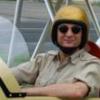
rigging flaps
Started by
efil 01,
10 posts in this topic
Create an account or sign in to comment
You need to be a member in order to leave a comment

Started by
efil 01,
You need to be a member in order to leave a comment